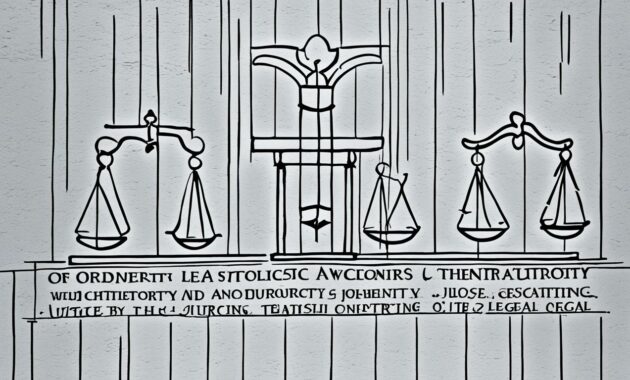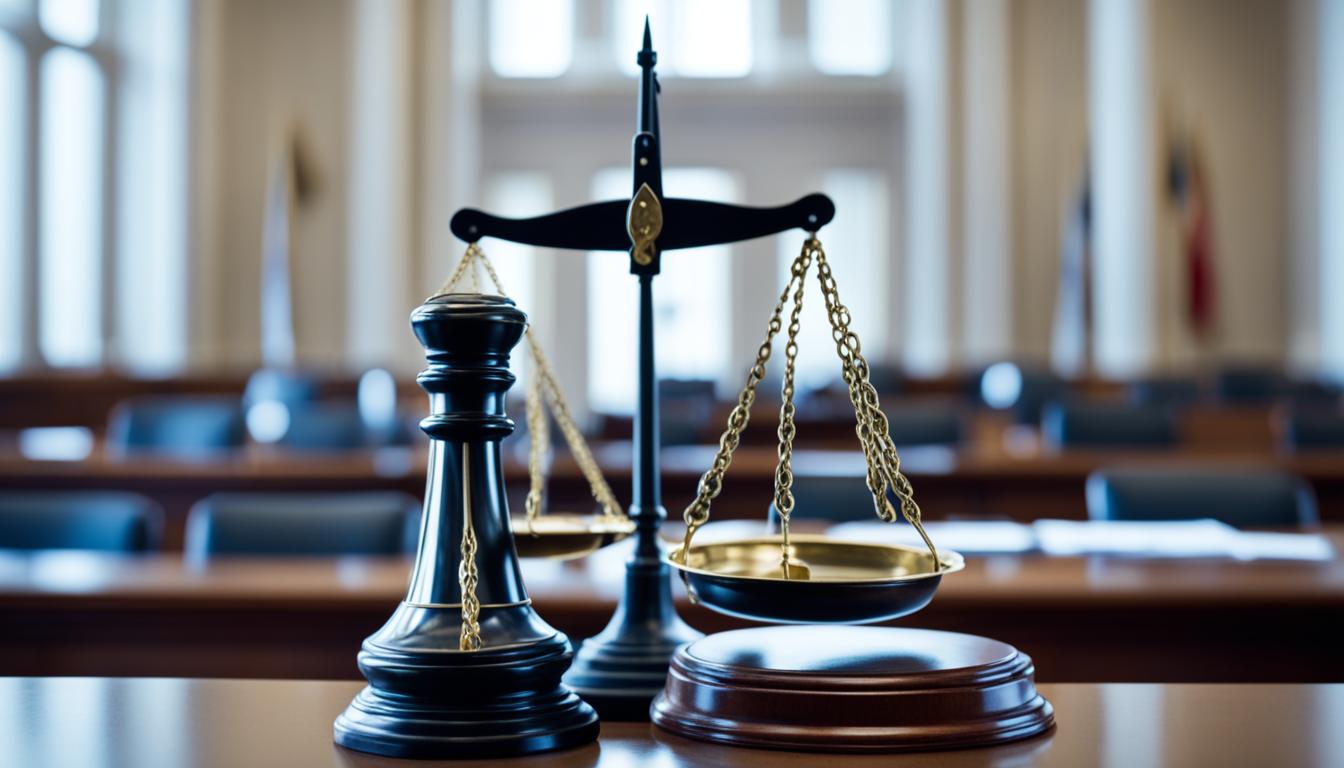Navigating the legal system can seem overwhelming. But, knowing the Middle District’s local rules is crucial for a smooth court experience. This guide covers the rules’ purpose, scope, and key guidelines for legal practices and courtroom behavior within this federal area. Whether you’re a lawyer or involved in a case, learning these rules will help you manage the Middle District’s court system well.
Understanding the Purpose and Scope of Local Rules
The Middle District local rules help court operations run smoothly. They make sure everyone in the legal system follows the same rules. Legal pros and people involved in the court system use these rules to understand what to do.
Rule 1.01 – Purpose, Scope, and Definitions
Rule 1.01 shows the main goal of the Middle District local rules. It explains what the rules cover and helps everyone speak the same legal language. Knowing these rules helps lawyers and court visitors work through legal processes.
Rule 1.04 – Divisions and Place to File
Rule 1.04 talks about the Middle District’s different parts and where to submit court documents. It makes sure cases go to the right place for handling. It’s important for everyone involved to file their papers in the correct spot to keep their case moving smoothly.
Learning the key points of the local rules, like why they exist and where to file, is helpful. It makes dealing with the Middle District’s legal system easier for legal pros and regular people.
“Understanding the local court rules is essential for navigating the judicial system and ensuring the successful resolution of legal matters.”
The Middle District’s local rules are like a map for court and legal paperwork. They set a clear way for how things should be done, making the system work better for everyone. These rules aim to be fair, clear, and help justice run smoothly.
Authority and Jurisdiction of U.S. Magistrate Judges
The Middle District’s local rules set clear directions for U.S. Magistrate Judges. Rule 1.02 gives Magistrate Judges broad power. This lets them lead many different legal events and tasks.
Magistrate Judges in the Middle District are key. They look after important parts of legal cases. For example, according to 28 U.S.C. §636(c), a Magistrate Judge can manage civil cases if everyone agrees.
These Judges also lead first steps in criminal cases and handle many other issues. Examples include social security appeals and prisoner cases. Plus, they run special programs like re-entry courts.
Even with their important roles, a district judge can take a case away from a Magistrate Judge for a good reason. Also, decisions by a Magistrate Judge can be appealed, like other court decisions, according to 28 U.S.C. §636(c)(3).
Anyone taking part in legal cases in the Middle District needs to know about Magistrate Judges’ duties and powers. This helps make sure everything runs smoothly and fairly.

“The Federal Magistrates Act of 1968 established the office of Magistrate Judge, and there have been subsequent statutory amendments enhancing the position, providing fair compensation, and implementing judicial retirement.”
The Middle District is always looking at how it does things. This way, the Magistrate Judges can help meet the changing legal needs better.
Middle District Local Rules for Civil Procedure
In the Middle District of Pennsylvania, special local rules control how civil cases work in the court. These rules help keep things moving smoothly and fairly. They explain how legal papers like pleadings and motions should look.
Rule 1.08 – Form of a Pleading, Motion, or Other Paper
Rule 1.08 tells us how to set up our civil court papers. It says that these documents need to follow certain rules. These include how the paper looks, the font, and the size of the document. Doing this helps the court handle and review papers faster.
Rule 3.01 – Motions, Briefs, and Other Legal Memorandums
Rule 3.01 explains how to send in motions and other legal papers. It tells us a few key points. For example:
- You usually get 14 days to respond to a motion, but sometimes it can be 21 days.
- All motions must be written and clearly say why they’re needed, following the Federal Rules of Civil Procedure.
- Motions must explain what they want clearly and include a bit about why they’re needed, plus a legal support section.
- Starting April 1, 2024, a motion can’t be longer than 25 pages.
- The person making the motion must say they talked to the other side’s lawyer.
- They also have to try to talk to the other lawyer within three days of filing the motion and fix the motion if needed.
- And don’t forget, every motion must be signed, showing who filed it and their contact info, as the Federal Rules of Civil Procedure say.
Following these rules is very important for civil cases in the Middle District of Pennsylvania to stay on track.
| Requirement | Details |
|---|---|
| Local Briefing Schedule | Parties may respond within 14 days to a motion, except in certain cases where the response period is extended to 21 days. |
| Rule Amendments effective December 1, 2023 | Deadlines stated in days, excluding the event day and including weekends and holidays, are computed uniformly, with specific provisions for filings on inaccessible days. |
| Cut-off or Deadline | Courts must establish a motion cut-off date pursuant to FRCP 16(b)(3) effective December 1, 2015. |
| Motion Papers | A motion must be in writing, stating specific grounds and relief sought as per FRCP 7(b)(1). |
| Brief Requirement | Motions must include a concise statement of relief sought, a basis statement, and legal memorandum support. |
| Page Limitation | Moving party’s motion cannot exceed 25 pages as of April 1, 2024. |
| Required Certification of Conference of Counsel | Moving party necessitates filing a statement certifying conference with opposing counsel. |
| Duty to Contact Opposing Counsel | Movant must endeavor to contact opposing counsel within three days post-filing, supplementing motion accordingly. |
| Motion Signature | Every motion must be signed by an attorney or party, including contact information, per FRCP 11(a). |
| ECF Filing | All documents in civil, criminal, and miscellaneous cases must be filed electronically. |
| Service Proof | Within 21 days of summons and complaint service, parties must file proof of service as of February 1, 2021. |
These rules aim to help manage civil cases well in the Middle District of Pennsylvania. It’s very important for lawyers and others to stick to these rules. This makes sure the court process runs smoothly and fairly for everyone involved.
Middle district local rules on Court Administration
The Middle District’s local rules aim to run the court smoothly. They help manage cases and keep things moving right. These include how cases are put on the docket and given to judges, and steps to move a case from state to Middle District court.
Rule 1.05 – Docketing and Assignment
Rule 1.05 explains how cases are recorded and handled in the court. It makes sure every case is correctly listed and given to the right judge. This keeps court administration working well and helps solve problems fairly and on time.
Rule 1.06 – Removal of an Action from State Court
The court’s rules also cover taking a case from the state court to the Middle District. Rule 1.06 guides parties on the steps to follow. It makes switching to federal court go smoothly and follow all the necessary laws.
The Middle District really focuses on good court administration, handling case docketing, case assignment, and removing cases from state court well. These rules are great for lawyers and others working with the court. They make sure cases in the district are taken care of correctly.

“Effective court administration is essential for ensuring the timely and equitable resolution of cases. The Middle District’s local rules provide a clear framework for managing the court’s operations and jurisdictional processes.”
Maintaining Courtroom Decorum and Conduct
The local rules stress the importance of proper courtroom decorum and courtroom conduct during legal proceedings. Rule 5.03, “Courtroom Decorum,” lays out guidelines. These make sure the court is serious and works well. This is key to having fair legal proceedings.
Rule 5.03 – Courtroom Decorum
There are specific professional etiquette rules for everyone in the courtroom:
- If you can, stand when the court starts, stops, or finishes.
- Keep your phone quiet, and use it only for court business.
- Don’t show how you feel with your face, words, sounds, or actions. This might influence the jury.
- Wear plain clothes that won’t make the jury think differently.
- You can only drink water, nothing else.
- Stand up when the jury comes in or leaves, if you’re able.
- Give the judge’s helper any papers that they need to see.
These rules help keep the court serious and focused. They make sure legal proceedings are professional for everyone involved. It’s very important to follow these rules for courtroom decorum and courtroom conduct.
“The purpose of these rules is to promote the fair administration of justice and the efficient operation of the courts. Compliance with these rules is essential to maintaining the dignity and decorum of the courtroom.”
By sticking to the Middle District local rules, all can help make courts organized and respectable. This way, they support fair justice for everyone.
Learn more about courtroom decorum guidelines from other places. This can help you see the best ways for courtroom conduct.
Navigating Court Proceedings and Legal Filings
The Middle District has special local rules. They help a lot with court work and legal papers. For instance, Rule 1.10 talks about proving you delivered documents and the time to respond. This makes sure everyone follows the rules when sending papers and meeting deadlines.
Rule 1.10 – Filing Proof of Service of Process; Deadline for Default
Rule 1.10 says you must prove you delivered documents on time. If you don’t do this on time, your case could be thrown out. It also sets a 60-day limit to ask for a default ruling after documents are served.
It’s very important to know these rules. They help you go through court without problems. People need to stick to what Rule 1.10 says. This makes sure their court and legal paperwork is right and follows the rules.
- File proof of service of process within the timeframe specified by the Federal Rules of Civil Procedure.
- Request the entry of default within 60 days of the date of service of the summons and complaint.
- Carefully review and comply with all deadlines and procedures outlined in Rule 1.10 to ensure proper documentation and compliance with local rules.
| Requirement | Deadline |
|---|---|
| File proof of service of process | Within the timeframe specified by the Federal Rules of Civil Procedure |
| Request the entry of default | Within 60 days of the date of service of the summons and complaint |
By knowing and following Rule 1.10, you can handle court steps better. This helps make sure your case is well-documented and follows the rules.
“Failing to properly serve court documents or meet deadlines can have serious consequences, potentially resulting in dismissal of a case or other sanctions. Understanding and following the requirements outlined in Rule 1.10 is crucial for navigating the legal system successfully.”
Middle district local rules on Legal Representation
The Middle District’s local rules make sure legal representation is done right. They keep the court’s integrity high. Also, they support good representation during legal processes. These rules are about when lawyers show up or leave, and how law students can work here.
Rule 2.01 sets out what’s needed to practice here. Rule 2.02 shows how an attorney can come in or leave. These rules are key to keeping legal work smooth and professional. They look out for everyone’s interests.
The rules also talk about law students. They can learn in the court under the watch of a real lawyer. This keeps the legal work at the best level.

